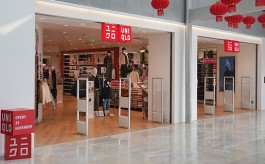Indian eCommerce sees 30% decline during Janata Curfew
By Retail4Growth Team | April 10, 2020
As per India’s leading processor of eCommerce authentication Wibmo, during lockdown, while online bill payments increased, food and beverage delivery apps and financial services took the most hit
 Online shopping fell by a whopping 30% on March 22, the day of Janata Curfew, as per India’s leading processor of eCommerce authentication Wibmo. In the coming week, Indian consumers returned online, however with a significant change in behavior.
Online shopping fell by a whopping 30% on March 22, the day of Janata Curfew, as per India’s leading processor of eCommerce authentication Wibmo. In the coming week, Indian consumers returned online, however with a significant change in behavior.
It further said that the consumers leaned into online bill payments with over 70% transactions in that category. Overall online purchases continue to see a dip of 16% as many services such as travel come to a standstill.
During lockdown, while online bill payments increased, food and beverage delivery apps and financial services took the most hit. Categories such as gaming and entertainment stayed steady for the most part. Online shopping witnessed consistency primarily driven by grocery and daily essentials.
“We process over 2.2 billion transactions annually giving us unique insight into consumer behavior and spending patterns. The shift in online purchases was inevitable as our consumers stay at home during this tough period,” said company CEO Govind Setlur. “This phase in our history will bring a significant shift toward online shopping with new products and services and as consumers start preferring the convenience. We at Wibmo, continue our operations as usual, since now, more than ever our services are critical to meeting our consumers’ daily needs,” he added.
RuPay spend slowly climbed back to about 98% of normal volumes but continued to fluctuate between 87% to 98% reflecting both caution and apprehension during uncertain times.
On the other hand, Visa and Mastercard purchases were back up to only 86% of their normal volumes and swung between 70-86%. This in part may be attributed to a reduction in discretionary spending.
As the week progressed, RuPay saw a further rise of 10%, as opposed to Visa and Mastercard purchases. During this same time, average ticket size dropped by 25% as consumers focused on necessities.









